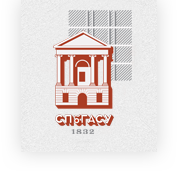Can large language models overcome opportunistic behavior in the prisoner's dilemma ?
DOI:
https://doi.org/10.63313/AERpc.2005Keywords:
Large Language Models, The Prisoner's Dilemma, Opportunistic BehaviorAbstract
Large language models as a tool for simulating humans still need to be explored to a large extent. There is still a lack of exploration of whether the behavioral response of large language models to simple social stimuli is consistent with human behavior and whether it can behave in accordance with human behavior under certain environmental incentives. Testing their behavioral responses in classical behavioral game experiments provides a theoretical framework for evaluating the ability of LLMs to simulate humans. In this study, the behaviors of ERNIE-Speed-128K, qwen2-1.5b-instruct and gpt-4o-mini in the one-time pris-oner dilemma and the iterated prisoner's dilemma were studied, and the effects of three different motivational strategies on their behavioral responses in the iterated prisoner's dilemma were explored. The study found that the large lan-guage model can overcome the opportunistic behavior in the prisoner's dilemma through repeated interactions, and the large language model can perform better by adopting incentive strategies. This paper provides new insights for further research on the combination of large language models and social sciences.
References
[1] Horton, J. J. (2023). Large language models as simulated economic agents: What can we learn from Homo silicus?
[2] Roth, Alvin, J. Keith Murnighan. (1978). Equilibrium behavior and repeated play in prison-ers' dilemma games. Journal of Mathematical Psychology, 2, 189-198.
[3] Murnighan, J.K., & Roth, A.E. (1983). Expecting Continued Play in Prisoner's Dilemma Games. Journal of Conflict Resolution, 27, 279 - 300.
[4] Palfrey, T.R., & Rosenthal, H. (1994). Repeated Play, Cooperation and Coordination: An Experimental Study. The Review of Economic Studies, 61, 545-565.
[5] Engle-Warnick, J., & Slonim, R. L. (2004). The evolution of strategies in a repeated trust game. Journal of Economic Behavior & Organization, 55(4), 553-573.
[6] Engle-Warnick, J., & Slonim, R.L. (2006a). Learning to trust in indefinitely repeated games. Games Econ. Behav., 54, 95-114.
[7] Engle-Warnick, J., & Slonim, R.L. (2006b). Inferring repeated-game strategies from actions: evidence from trust game experiments. Economic Theory, 28, 603-632.
[8] Feinberg, R.M., & Husted, T.A. (1993). An Experimental Test of Discount-Rate Effects on Collusive Behaviour in Duopoly Markets. Journal of Industrial Economics, 41, 153-160.
[9] Fréchette, G. R., & Yuksel, S. (2013). Infinitely repeated games in the laboratory: Four per-spectives on discounting and random termination. Working Paper.
[10] Dreber, A., Fudenberg, D., & Rand, D. G. (2011). Who cooperates in repeated games? Work-ing Paper.
[11] Asfour, M. & Murillo, J. C. (2023). Harnessing large language models to simulate realistic hu-man responses to social engineering attacks: A case study . International Journal of Cyber-security ntelligence & Cybercrime,6(2),21-49.
[12] Dillion, D., Tandon, N., Gu, Y., & Gray, K. (2023). Can AI language models replace human participants?. Trends in cognitive sciences, 27(7), 597–600.
[13] Argyle, L.P., Busby, E., Fulda, N., Gubler, J.R., Rytting, C., & Wingate, D. (2022). Out of One, Many: Using Language Models to Simulate Human Samples. Political Analysis, 31, 337 - 351.
[14] Park, J. S., O'Brien, J., Cai, C. J., Ringel Morris, M., Liang, P., & Bernstein, M. S. (2023). Genera-tive agents: Interactive simulacra of human behavior. In Proceedings of the 36th Annual ACM Symposium on User Interface Software and Technology (UIST '23) (Article 2, pp. 1-22). Association for Computing Machinery.
[15] Brookins, P., & DeBacker, J. (2024). Playing games with GPT: What can we learn about a large language model from canonical strategic games? Economics Bulletin, 44(1), 25-37.
[16] Mei, Q., Xie, Y., Yuan, W., & Jackson, M. O. (2024). A Turing test of whether AI chatbots are behaviorally similar to humans. Proceedings of the National Academy of Sciences of the United States of America, 121(9), e2313925121. https://doi.org/10.1073/pnas.2313925121
[17] Aher, G., Arriaga, R. I., & Kalai, A. T. (2023). Using large language models to simulate multi-ple humans and replicate human subject studies. In Proceedings of the 40th International Conference on Machine Learning (ICML'23) (Vol. 202, Article 17, pp. 337-371). JMLR.org.
Downloads
Published
Issue
Section
License
Copyright (c) 2025 by author(s) and Erytis Publishing Limited.

This work is licensed under a Creative Commons Attribution 4.0 International License.















